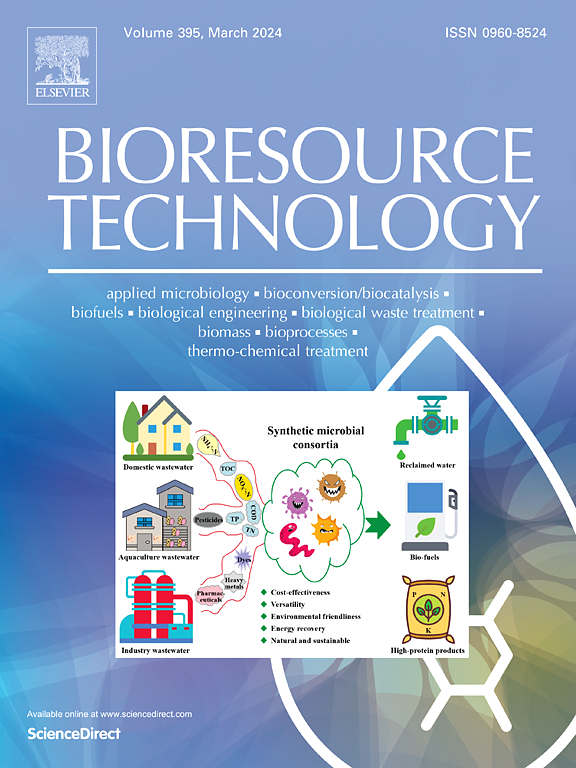Mitigation of ammonia and volatile fatty acids inhibition in dry anaerobic digestion of chicken manure by biochar prepared at varying pyrolysis temperatures
IF 9.7
1区 环境科学与生态学
Q1 AGRICULTURAL ENGINEERING
引用次数: 0
Abstract
This study examined the impact of various types of biochar on dry anaerobic digestion of chicken manure under the combined stress of ammonia and volatile fatty acids (VFAs). Total ammonia nitrogen (TAN) concentration at 9069 mg/L and total VFAs (TVFA) concentration at 33646 mg-HAc/L decreased the biogas production potential of chicken manure by approximately 50 %. The introduction of biochar prepared at 800 °C (BC800) enhanced the maximum biogas production rate of the inhibited anaerobic digestion mixture by 121.3 % and reduced the anaerobic digestion period by 38.6 %. The superior electrical conductivity, high specific capacitance value, large pore volume, and large specific surface area of BC800 significantly improved its performance in facilitating dry anaerobic digestion. BC800 enriched Bathyarchaeia and Methanosaeta, fostering the breakdown of propionic acid and bolstering acetoclastic methanogenesis. This study provides valuable experience for dry anaerobic digestion of chicken manure in future applications.

求助全文
约1分钟内获得全文
求助全文
来源期刊

Bioresource Technology
工程技术-能源与燃料
CiteScore
20.80
自引率
19.30%
发文量
2013
审稿时长
12 days
期刊介绍:
Bioresource Technology publishes original articles, review articles, case studies, and short communications covering the fundamentals, applications, and management of bioresource technology. The journal seeks to advance and disseminate knowledge across various areas related to biomass, biological waste treatment, bioenergy, biotransformations, bioresource systems analysis, and associated conversion or production technologies.
Topics include:
• Biofuels: liquid and gaseous biofuels production, modeling and economics
• Bioprocesses and bioproducts: biocatalysis and fermentations
• Biomass and feedstocks utilization: bioconversion of agro-industrial residues
• Environmental protection: biological waste treatment
• Thermochemical conversion of biomass: combustion, pyrolysis, gasification, catalysis.
 求助内容:
求助内容: 应助结果提醒方式:
应助结果提醒方式:


